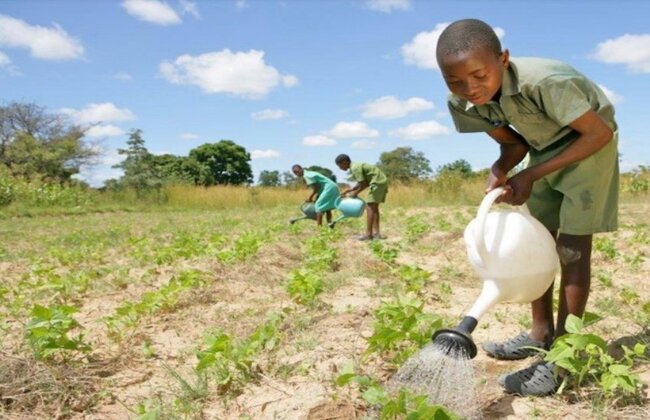
In the heart of Earth Child Institute’s mission to nurture the future stewards of our planet, the story of Eric Hansel unfolds as a testament to the transformative power of educating children on environmental responsibility. Hailing from Pennsylvania, USA, Hansel’s journey took a poignant turn when his career as a respiratory therapist plunged him into the harsh realities of a trauma unit, witnessing families losing their children to various diseases. It was during these challenging moments that Hansel resolved to be part of a movement that aimed to instill eco-consciousness in the hearts of the young.
Now, at COP 28, representing the Earth Child Institute, Hansel passionately shares the impact of their initiatives. The Earth Child Institute, founded by Donno Godman at the UN two decades ago, boasts observer status at the United Nations. Their unwavering mission is to mold children into climate leaders through educational programs that span 25 countries, 15 of which are in Africa.
The organization employs a hands-on approach, sending trainers to develop curriculum and work closely with teachers in schools. The programs encompass diverse topics such as clean drinking water, sanitation, and the critical role of planting trees in safeguarding coastlines. The trainers remain on-site until the initial implementation, ensuring a seamless transition to the school system. The Earth Child Institute further supports these initiatives through a grant program, providing essential financial aid to sustain and expand the programs.
“The crux of their approach lies in recognizing the unique power children hold in driving change. When educated about environmental issues, children become advocates within their families, spreading awareness and influencing behavioral shifts,” says Hansel, emphasizing the effectiveness of teaching kids about planting trees to protect coastlines, a message that resonates differently with the young compared to adults preoccupied with immediate concerns like putting food on the table.
The organization’s reach extends far beyond urban landscapes, covering hundreds of schools in rural areas across the globe. Their ambition is to collaborate with ministries of education in various countries to streamline program implementation and amplify their impact. Through partnerships with organizations like Brazil’s Global Action Classroom program (GAC), Nigeria’s HACEY, and collaborations with local schools and ministries, Earth Child Institute tailors its approach to the unique needs of each region.
In Brazil, the GAC program facilitates connections among kids and young people to discuss environmental issues, bridging gaps between urban and rural communities. In Nigeria, a collaborative effort between HACEY, local schools, and the Ministry of Environment focuses on water, sanitation, and hygiene education. Ghana sees the Earth Child Institute working in tandem with the Ministry of Education, the Forestry Department, and local institutions to emphasize environmental education and tree planting.
Even in regions like Qatar and the Seychelles, where the challenges may be unique due to their geographical and geopolitical contexts, Earth Child Institute adapts its strategies. In Qatar, youth leaders collaborate with local schools in Doha to identify school teams for participation, while in the Seychelles, partnerships with the Ministry of Environment tackle climate change in an endangered small island state.
“However, the real magic happens when these programs resonate with the children. The lifelong relationships forged with schools and the lasting commitment to sustainability that grows over time. When children comprehend the direct impact of practices like proper handwashing on their health, they become the torchbearers of this knowledge within their families, setting in motion a ripple effect that extends far beyond the classroom. Indeed, the seeds of change are best planted in the fertile hearts and minds of the next generation,” Hansel told IPS.
According to the UNICEF report, the number of children potentially exposed to climate risks and their effects is alarming. Currently, over half a billion children are living in areas with extremely high levels of flood occurrence, and nearly 160 million live in areas of high or extremely high drought severity. Most of them live in some of the world’s poorest countries, with the least capacity to manage these environmental risks.
It adds that overlaying maps of projected temperature changes with projected child population data indicates that, under a business-as-usual scenario, by 2050, 1.45 billion children are projected to live in zones where the maximum average surface temperature will change by greater than 2ºC.
Under a moderately ambitious action scenario, this number is projected to drop to around 750 million children. Under a highly ambitious action scenario, the number would drop to 150 million children.
Umar Manzoor Shah is a correspondent of Inter Press Service (IPS)


